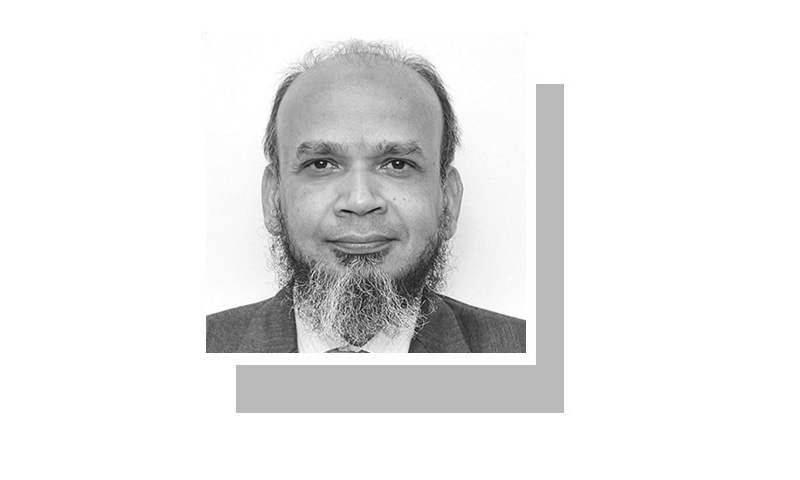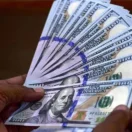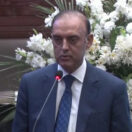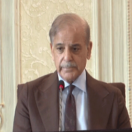By Riaz Riazuddin
Published in DAWN on March 31, 2022
IT is well-known that monetary tightening causes misery to borrowers as interest rates go up, making loans costly. An overemphasis on costs is, perhaps, a part of human nature. Observe any child who is about to be pricked with an injection needle; he tries hard to avoid the shot. Fortunately, his elders are wise and hold him firmly to get him through the process. The cost to be borne is short-term pain, while the benefits to his health are long-term.
Monetary tightening is no different and involves pricking the economic bubble. Short- to medium-term pain is endured for gaining long-term economic health benefits. Unfortunately, the elders of our economy usually behave like small children and try to avoid the shot until economic sickness leads to the depletion of liquid reserves and loss of growth electrolytes. And it is seldom our own hand that provides firm support. Many politicians, media experts and economic pundits then resort to the familiar narrative of lost sovereignty, unbearable debt burden and interest expenses, obliquely implying that the child was right, and the shot should not have been administered. This seems to be, unfortunately, the collective mindset that still constrains us, as evident from the fact that we still remain underdeveloped in the 75th year of our independence and are still trying to eradicate polio.
Short- to medium-term pain must be endured for gaining long-term economic benefits.
The real benefit of appropriate tightening lies in reducing inflation and the temperature of the overheated economy, saving precious reserves from depletion, and putting the economy on the trajectory of sustainable growth. The road to lower inflation entails costs to borrowers and benefits to depositors. There were about 62.9 million deposit accounts and 3.9m loan accounts in our commercial banks at the end of June 2021, according to the State Bank’s Statistical Bulletin of March 2022. Although the actual number of borrowers and depositors is not available, what matters for our analysis is the number and size of these accounts. Deposits were about Rs19.1 trillion and the total amount of loans was Rs8.7tr. These include the loans to public-sector enterprises (PSEs), but exclude the credit extended by commercial banks through their investments in government securities (T-bills and PIBs). Government borrowings through national saving schemes are excluded. Government borrowing from the State Bank are also not captured in this data.
Meanwhile, government borrowing from commercial banks through T-bills was Rs6.2tr and PIBs Rs6tr. Government borrowing from the State Bank was also Rs6tr. Borrowing through National Saving Schemes and prize bonds was Rs3.9tr. We can safely exclude borrowing from the State Bank in this benefit-cost analysis as any additional interest paid to the government, returns to it through the transfer of State Bank profits. Remember that NSS rates are not linked to the State Bank policy rate, and this borrowing could also be excluded from this exercise as the interest expense of the government directly benefits individual savers of these schemes. We, nevertheless, account for this cost also.
From June 2021 to January 2022, the State Bank policy rate increased by 2.75 percentage points (from 7.0 per cent to 9.75pc). Six-month T-bill rates increased by 3.07 percentage points (from 7.56pc to 10.63pc); 10-year PIB rates by 2.06 percentage points (from 8.87pc to 10.93pc) and special savings certificate rates by two percentage points (from eight to 10.) This means that the additional borrowing cost is likely to rise — given the outstanding borrowing figures in the previous paragraph) by Rs190 billion+124bn+78bn, ie Rs392bn in FY22. Let us now capture the interest cost of other borrowers including the private sector and PSEs. The weighted average lending rates on outstanding loans increased by 1.34 percentage points (eight to 9.34,) imposing an additional interest cost of Rs117bn (1.34pc of 8.7tr) Total interest cost to borrowers, therefore, comes to Rs509bn.
While almost everyone knows that our government is the largest borrower, few would know that it is also the biggest depositor (together with PSEs) in commercial banks. Of the total deposits, about Rs4.1tr belonged to the government and PSEs! The weighted average return on deposits increased by 1.56 percentage points (3.56 to 5.12). This means that all depositors are likely to earn Rs298bn on deposits of Rs19.1tr outstanding by end-June 2021. Therefore, the interest cost of monetary tightening is Rs209bn. This is the one-year cost that will benefit from monetary tightening.
A 100 basis-point increase in the discount rate leads to a reduction of inflation by nearly 200 basis points in three years, or 66 basis points in a year according to the State Bank’s Working Paper No. 80. As the policy rate of the central bank increased by 275 basis points from July to December 2021, inflation is likely to be reduced by 550 basis points in three years, or 183 basis points per year on average. The pecuniary benefit of this reduction in inflation is simply 1.83pc of the real value of the FY21 GDP (Rs36.5tr) This is around Rs668bn.
Again, one crucial assumption in this analysis is that economic growth exceeded its potential (or very close to it) before tightening. Another important assumption is that the exchange rate is fully aligned with our economic fundamentals ie foreign exchange reserves of the central bank are increasing (at best) or not declining (at worst). Any decline in reserves will rapidly erode the benefits of tightening.
At the current exchange rate of about Rs183 to the dollar, a decline of $1bn will erode Rs183bn from the net benefits estimated above. One may note that the State Bank’s foreign exchange reserves have declined from a peak of $20.1bn on Aug 27, 2021, to about $15bn on March 18, 2022. This is a decline of about $5bn. It seems that the one-year pecuniary benefits of interest rate increase have been wiped out by reserves’ depletion. Our economy is again fast approaching a balance-of-payment crisis as our political elders, from all sides, are fiercely engaged in a game of thrones.






